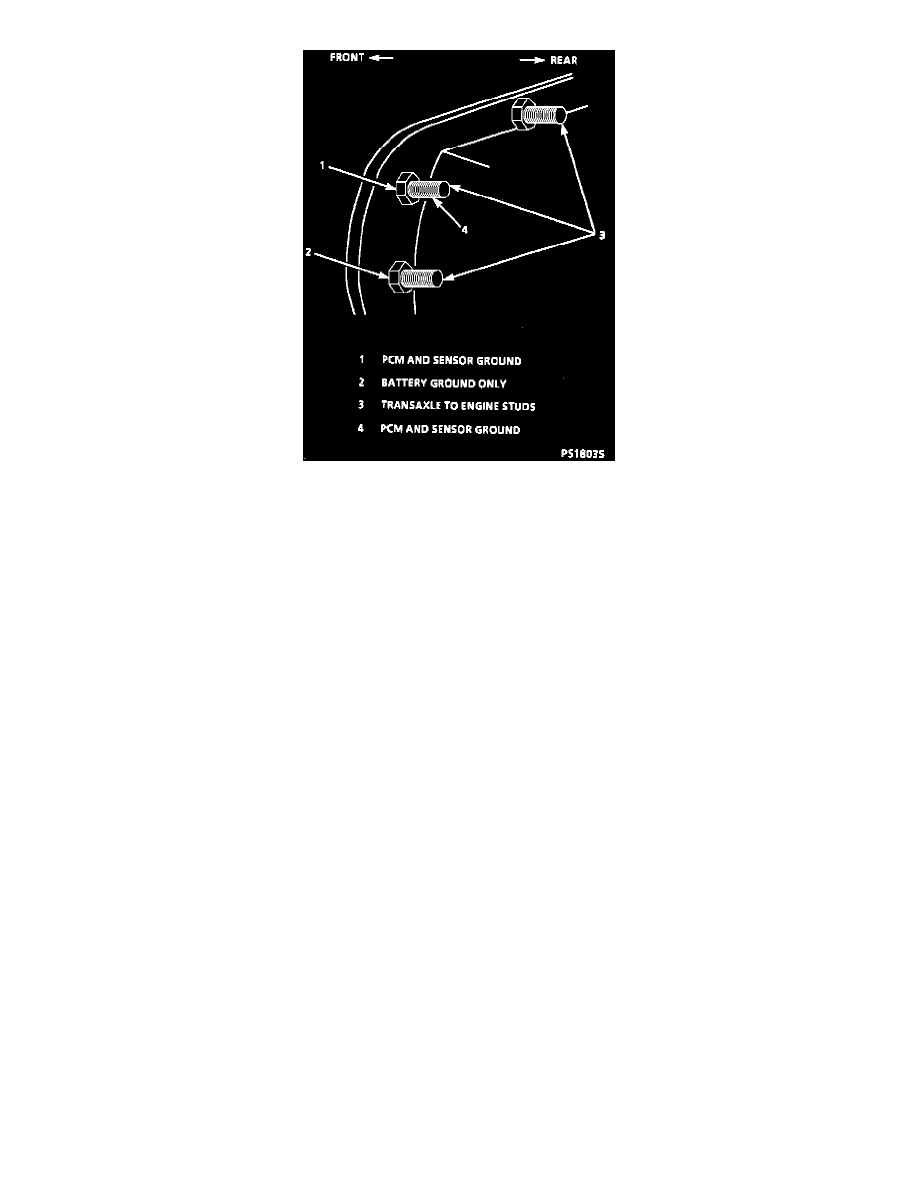Cutlass Ciera Cruiser V6-3100 3.1L MFI VIN M (1994)

PCM And Sensor Ground Locations
Service of the Powertrain Control Module (PCM) should normally consist of either replacement of the PCM or a PROM change.
If the diagnostic procedures call for the PCM to be replaced, the engine "calibrator" (PROM) and PCM should be checked first to see if they are the
correct parts. If they are, remove the PROM from the faulty PCM and install it in the new service PCM.
THE SERVICE PCM WILL NOT CONTAIN A PROM. Diagnostic Trouble Code (DTC) P1623 indicates the PROM is installed improperly or has
malfunctioned. When DTC P1623 is encountered, check the PCM installation for bent pins or pins not fully seated in the socket. If it is installed
correctly and DTC P1623 still sets, replace the PROM.
CAUTION:
^
To prevent possible Electrostatic Discharge damage to the PCM or PROM, Do Not touch the component leads, and Do Not remove integrated
circuit from carrier.
^
When replacing the production PCM with a service PCM (controller), it is important to transfer the broadcast code and production PCM number
to the service PCM label. Please do not record on PCM cover. This will allow positive identification of PCM parts throughout the service life of
the vehicle.
^
To prevent internal PCM damage, the ignition must be "OFF" when disconnecting or reconnecting power to PCM (for example, battery cable,
PCM pigtail, PCM fuse, jumper cables, etc.).
^
The PCM ground must be located on the transaxle to engine stud as shown the image. If the PCM ground was on the "battery" ground stud, a high
current ground could create transient sensor values to PCM.
REMOVE OR DISCONNECT
1. Ignition "OFF"
2. Right hand hush panel.
3. Connectors from PCM.
4. PCM from passenger compartment.
5. PCM access cover.
6. PROM.
CAUTION:
^
Replacement PCM is supplied without a PROM, so care should be used when removing it from the defective PCM because it will be reused in the
new PCM.
^
Using two fingers, push both retaining clips back away from the PROM. At the same time, grasp it at both ends and lift it up out of the socket. Do
not remove the cover of the PROM. Use of unapproved PROM removal methods may cause damage to the PROM or socket.
Inspect
Note position of PROM for proper installation in new PCM.
